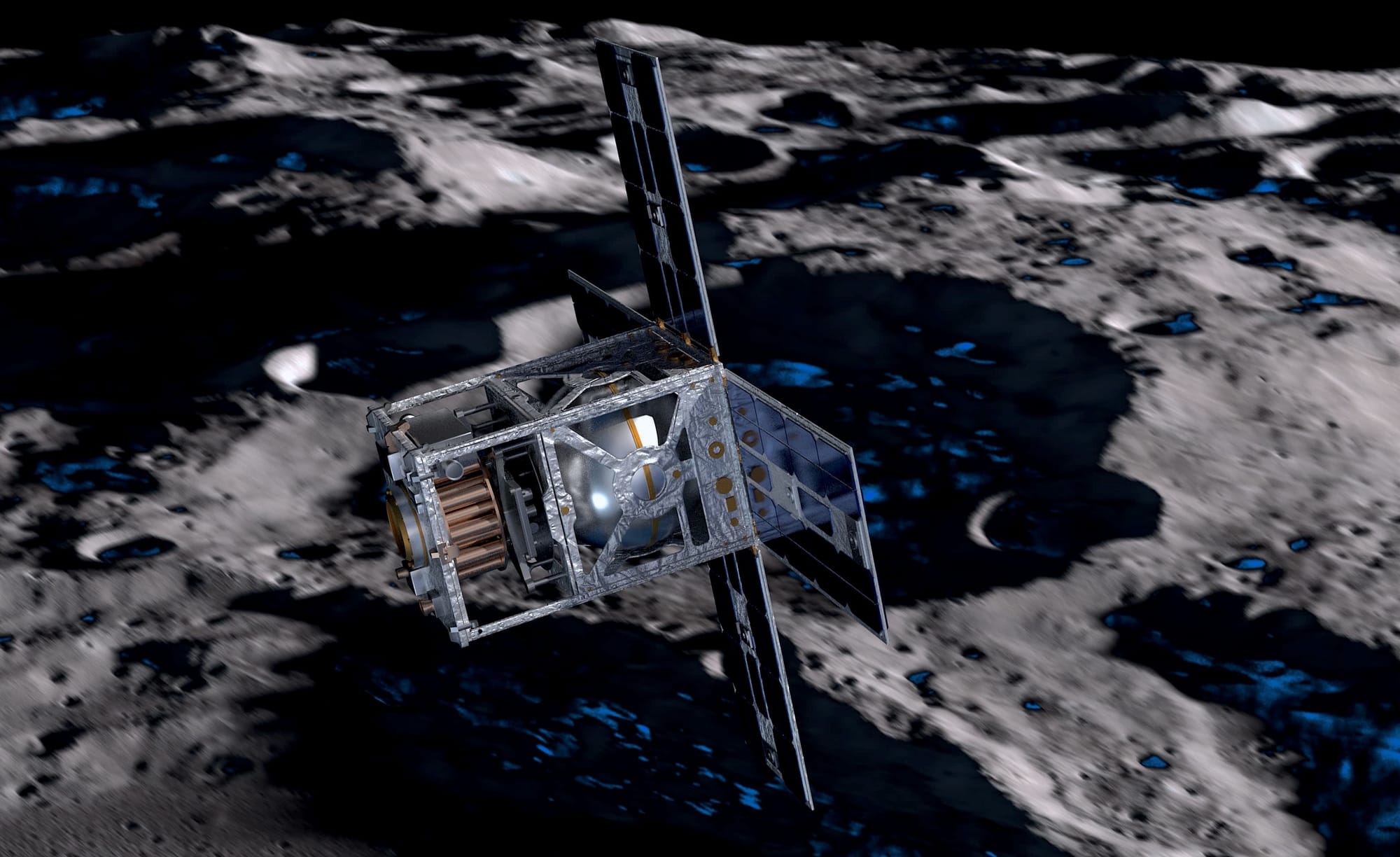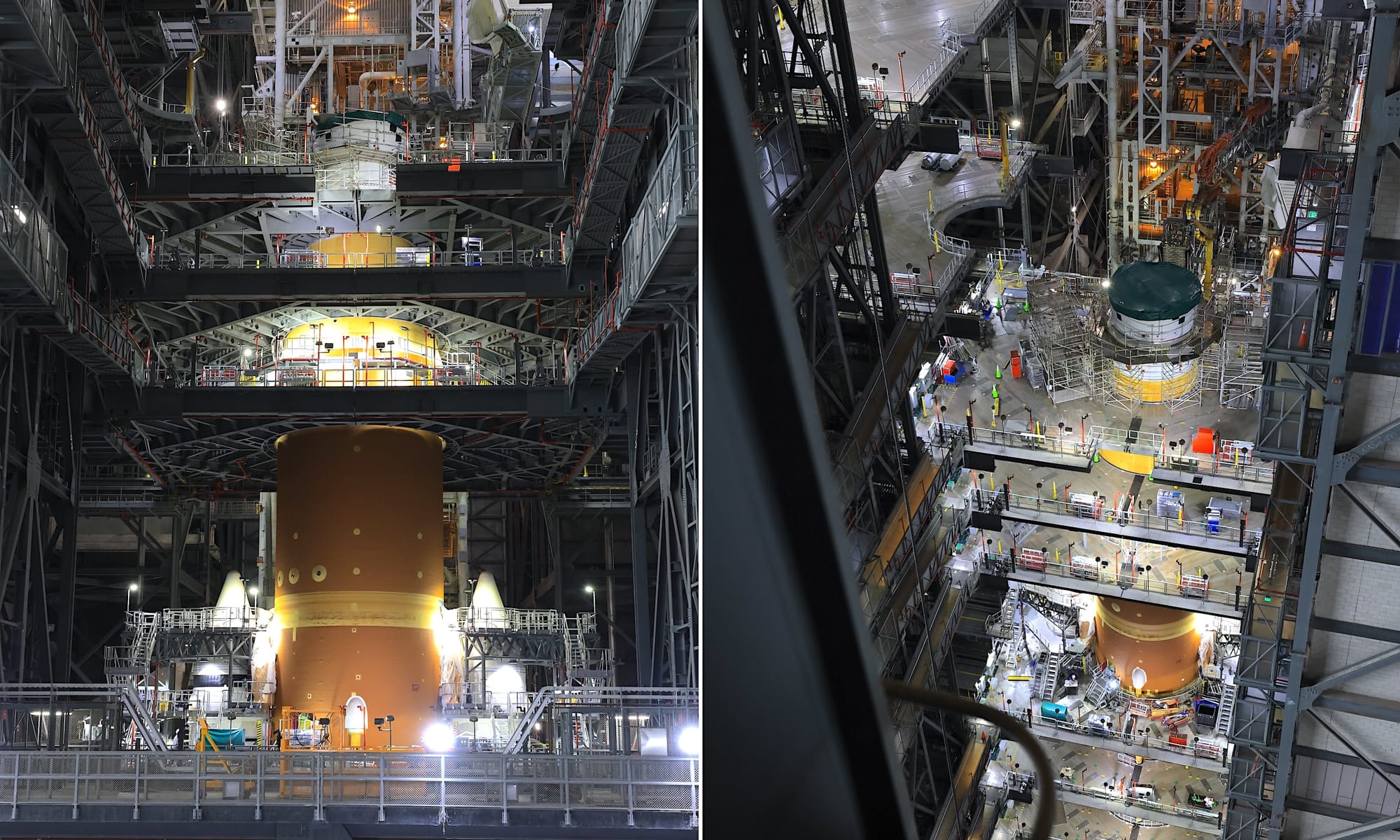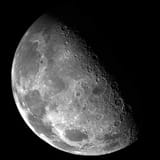Moon Monday #245: Blue origin to hunt for a lunar oasis
Plus mission updates.

Blue Origin announced that it will send an “ultra-low” polar orbiter called Oasis-1 to the Moon to “create the most detailed high-resolution maps to date of lunar water ice, Helium-3, radionuclides, rare earth elements, precious metals, and other materials”. The mission will be in partnership with the Luxembourg Space Agency, ESA’s space-resources-focused ESRIC institute, and GOMspace.
Blue Origin noted in its blog post that the orbiter will use “neutron spectroscopy to quantify subsurface water ice concentrations to one-meter depths”. That’s a reasonable yet indirect method to detect lunar water ice as what it really does is detect hydrogen as a presumed sign of water molecules. There will be more instruments aboard Oasis-1:
Additional instruments include magnetometers for metal detection and multispectral imaging for Helium-3 and geological mapping, with controlled impact sequences maximizing data collection for precise extraction site selection.
When asked what is the planned altitude range for the “ultra-low” lunar polar orbiter, Blue Origin responded with the following:
Nothing further to share than what was in the blog post.
The company did not specify when Oasis-1 is supposed to launch either. As such, the project can be assumed to be in early stages, with the announcement being a starting point for more to come.
Upcoming missions globally aiming to find and characterize the nature of lunar polar water include China’s Chang’e 7 and Chang’e 8 spacecraft, NASA’s VIPER rover, and the joint Indo-Japanese Chandrayaan 5 / LUPEX mission. These missions will also provide context for analyzing ISRO’s Chandrayaan 4 samples, which aims to bring lunar polar material to Earth in 2028. Considering that the US has been failing to explore lunar water as the principal goal of Artemis, Blue’s announcement of Oasis-1 is welcome despite the fuzziness on details.
Oasis-1 is the opening part of Blue’s multi-phase initiative to locate, map, characterize, and utilize lunar resources. And the closing end is Blue’s Alchemist project, which recently passed Critical Design Review (CDR). The project currently involves making solar cells using silicon and metals extracted from lunar soil simulants. This milestone is part of a broader goal set in 2023, when the company received $34.7 million from NASA as part of public-private Tipping Point contracts to build advanced lunar technologies. Said broader goal is to demonstrate the autonomous operation of Blue Alchemist solar cells in a “simulated lunar environment” by 2026. The latest CDR milestone clears the way for trying to achieve that goal.
While Blue Alchemist is an undeniably intriguing project, the sheer complexity and scale of producing infrastructure on the Moon to power habitats means that at least for a decade from now, NASA’s plans for getting power—solar and nuclear—for surface activities continues to be through the annoying tradition of pulling material out of Earth’s gruesome gravitational well. It should be noted though that Blue Alchemist includes systems for extracting oxygen from lunar soil while getting metal byproducts so that will be useful in the meanwhile when it comes.
Between Project Oasis, the company’s bet to carry NASA’s VIPER rover to the Moon, and using in-space refueling as a central architectural component for aiming to land humans on Luna, Blue Origin is positioning itself as an end-to-end lunar transportation and resource company.
Many thanks to Open Lunar Foundation and Gurbir Singh for sponsoring this week’s Moon Monday! If you too appreciate my efforts to bring you this curated community resource on global lunar exploration for free, and without ads, kindly support my independent writing:
More Moon

- NASA completed integrating all hardware modules of the SLS rocket for the upcoming crewed Artemis II circumlunar mission with the latest addition of the stage adaptor. The adaptor sits atop the rocket’s upper stage, and is upon which the crew’s Orion spacecraft will come next. NASA says a composite diaphragm in the adaptor protects the Orion spacecraft from hazardous gases generated during launch. The four astronauts flying around the Moon and back on the mission have named their Orion craft “Integrity”. NASA continues to target April 2026 as the official date for Artemis II’s launch although quite a few pre-launch preparations remain for this year and next.
- ispace has been selected as part of Japan’s 1-trillion yen “Space Strategy Fund” initiative to develop, launch, and operate a lunar orbiter which will use a terahertz wave sensor system to locate and map water ice deposits on the Moon’s poles. Data from this orbiter will be analyzed in tandem with direct surface and subsurface measurements made by the upcoming joint Indo-Japanese LUPEX rover mission.
- ispace Europe has bagged a $22 million contract from Magna Petra to carry a NASA-developed mass spectrometer on its second lunar micro-rover. [The first rover was aboard the parent company ispace Japan’s second Moon lander RESILIENCE, which crashed on the Moon due to performance issues of the laser rangefinder.] The second rover will be aboard ispace Japan’s US subsidiary’s first lander part of the NASA-funded CLPS program through Draper. It is targeting a landing on the Moon’s farside in 2027.
- Relatedly, a South Korean company called Unmanned Exploration Laboratory (UEL) is building two micro rovers and intends to send them on future Moon landing missions by ispace.
- Last year we learnt that the launch of Australia’s first lunar rover called Roo-ver has been delayed to 2028—two years later than originally intended. Roo-ver is to launch on an as-yet-unidentified NASA CLPS lander to explore the Moon’s south pole for water ice. Now it seems that the launch year is pushed further, with a NASA release on the partnership stating “by the end of this decade” as the timeframe. Even the instrument being contributed by NASA is talked about murkily:
Australia is developing a semi-autonomous lunar rover, which will carry a NASA analysis instrument intended to demonstrate technology for scientific and exploration purposes.
A NASA analysis instrument intended to demonstrate technology for scientific and exploration purposes? To borrow a phrase I’ve picked up from a friend: “I understood all the words but not the sentence.”
